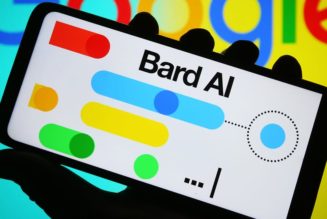Auto SR will ship first on Copilot Plus PCs with Qualcomm chips.
Share this story

Microsoft is launching a new Automatic super resolution (Auto SR) feature on its upcoming Copilot Plus PCs that will compete with upscale technologies like Nvidia’s DLSS. The AI-based Auto SR feature will automatically upscale game resolutions and improve frame rates, and Microsoft is now detailing exactly how it’s different to DLSS, XeSS, and FSR.
Auto SR will be integrated into Windows 11, and available on Copilot Plus devices that have a dedicated Neural Processing Unit (NPU). It’s designed to work with existing games with no manual configurations required and no need for game developers to change how their games are rendered.
“Auto SR is different from super resolution technologies like AMD FidelityFX Super Resolution, Intel XeSS, and NVIDIA DLSS Super Resolution built into games,” says the DirectX team in a blog post. “These approaches require games to alter their rendering, for example, by using jitter and MIP bias to add finer details. In contrast, Auto SR tackles the task of enhancing games without the extra information to improve games as they exist today.”


Auto SR uses larger on-device AI models combined with the NPU on Copilot Plus devices to apply AI enhancements to game visuals, all while rendering a game at a lower resolution to improve frame rates. Microsoft is offloading the work directly to the NPU here so it’s not even hitting the GPU to get upscaling working. “This strategic shift not only improves framerates but also enhances the energy efficiency of each frame rendered, significantly boosting the overall gaming experience,” says the DirectX team.
There is a slight latency tradeoff, though. “While running our large model, Auto SR introduces a single frame of latency on average as it uses AI to significantly boost your game’s visuals,” admits Microsoft. We’ll have to test this fully to see if that single frame is noticeable, and which games it impacts more than others.


At launch on June 18th, Microsoft is only automatically enhancing 11 games that have been tested to improve visual quality, framerates, or a combination of both. Borderlands 3, Control (DX11), Dark Souls III, God of War, Kingdom Come: Deliverance, Resident Evil 2, Resident Evil 3, Sekiro Shadows Die Twice, Sniper Ghost Warrior Contracts 2 and The Witcher 3, are all on the launch list that have been verified by Microsoft.
That list will grow over time, and it’s easy to toggle the Auto SR feature on or off and adjust settings for individual games. Microsoft says you can also “explore this feature on additional untested games,” and force the setting on. “There may be some quirks and we can’t guarantee it will apply or improve your experience,” warns Microsoft.
The first set of Copilot Plus PCs are set to launch on June 18th with Qualcomm’s Snapdragon X Elite chips, so it won’t be long until we see how well Microsoft’s Auto SR works in reality. The feature will also eventually be available on new AMD- and Intel-powered Copilot Plus PCs, although it sounds like these machines won’t have Copilot Plus AI features until a post-launch update ships.
Microsoft is now working on Auto SR improvements, including support for HDR and multiple-monitor configurations. “As we continue to explore Auto SR capabilities, we look forward to exploring bringing Auto SR to more devices and a broader selection of x64 emulated games,” says the DirectX team.









